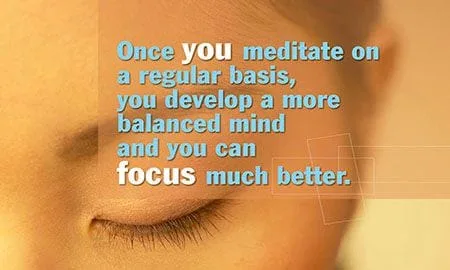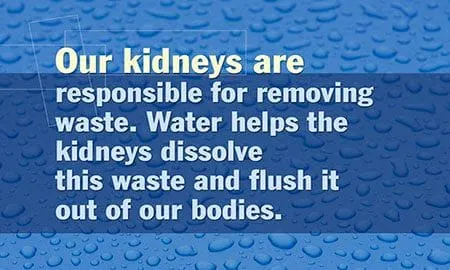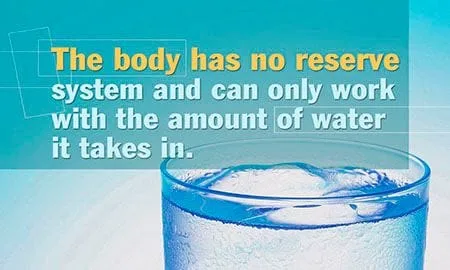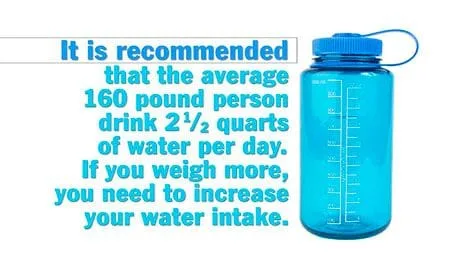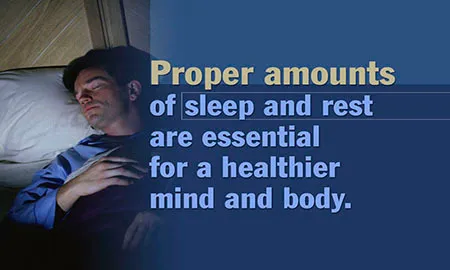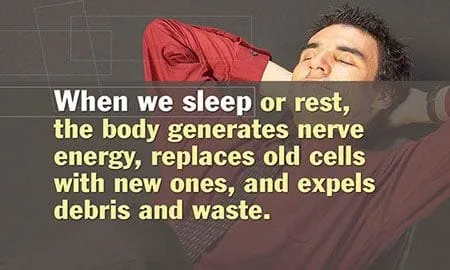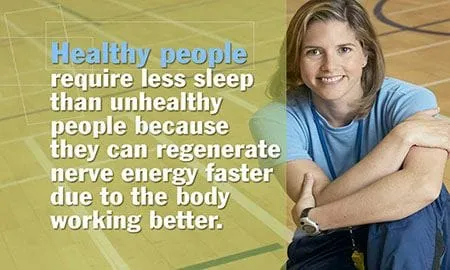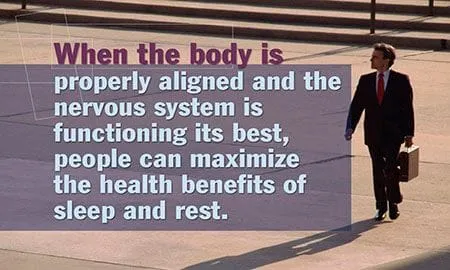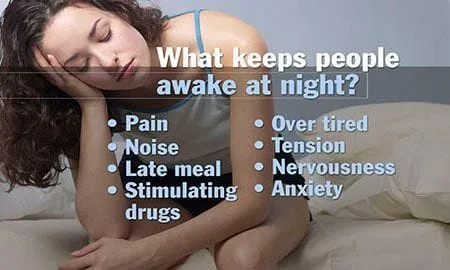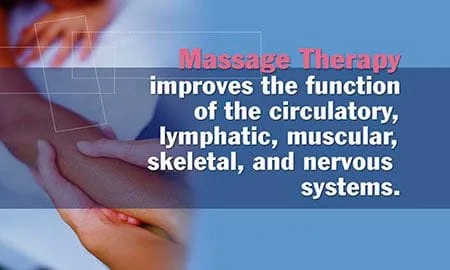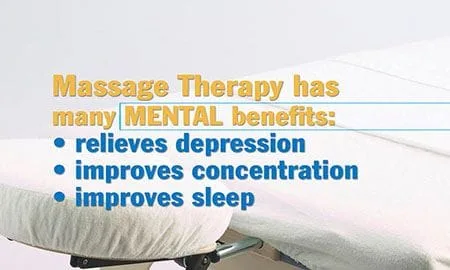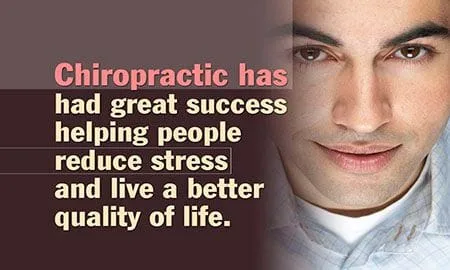Since its formal foundation in 1895, the chiropractic profession has grown into the second largest of the primary health care professions. In the mid-1970's, chiropractic experienced rapid growth and acceptance-largely as a result of positive research findings that validate the benefits of chiropractic care. In the United States, chiropractic is now included in major insurance and Federal programs, such as Medicare, the military and the Veterans Administration.
What is Chiropractic?
Chiropractic champions a natural method of healing, advocating a non-surgical, non-invasive and drugless approach to the treatment of patients. Grounded in a view of the individual as an integrated being, the chiropractor focuses on spinal health and wellness as the keys to overall health and well being.
Because of the interrelatedness of the body's various systems, chiropractic theory holds that spinal mechanics- including the vertebrae, corresponding nerves and soft tissues- play a primary role in the health of the whole body.
What Does a Chiropractor Do?
The primary treatment for spinal dysfunction (spinal misalignment or subluxation) is a procedure known as vertebral adjustment, or more generally, spinal manipulation. An adjustment is a technique in which the chiropractor skillfully applies pressure to an area of the spine (or other joint) that is not functioning properly or is out of alignment. The procedure is often, but not always, applied manually. The intended result is reduced pain and inflammation, and restored function to the injured area.
In addition to adjustment of manipulation, patients may also receive a treatment plan that uses physiological procedures, such as ultrasound, electric muscle stimulation, controlled exercise, nutritional counseling, and other professional advice that may improve overall health.
Patient progress under chiropractic care will be carefully monitored. Subjective improvements and objective clinical findings will be noted and treatment will be modified to meet the patient's changing conditions. Should it be found that another type of health care would benefit healing, a referral to the appropriate provider will be made.
Research Supports Chiropractic
Although empirical evidence suggests that chiropractic is safe and effective means of natural healing, a growing body of scientific data supports chiropractic's effectiveness. The studies listed below are a small fraction of the studies published on the efficacy of chiropractic.
Government Guidelines- The Federal Agency for Health Care Policy and Research (AHCPR) released a clinical practice guideline for the treatment of acute low back problems. The guidelines recommend the use of spinal manipulation as an effective method of symptom control and "manipulation... is safe and effective for patients in the first month of acute low back symptoms without radiculopathy [disease of the spinal nerve roots]." Regarding bed rest, the panel found that "a gradual return to normal activities is more effective than prolonged bed rest..." The effectiveness of surgery for acute back pain was similarly questioned.
The Manga Study- When the Ministry of Health, Government of Ontario, Canada, wanted information on the effectiveness and cost-effectiveness of chiropractic management of low-back pain, they funded a study by economist Pran Manga, Ph.D. Dr. Manga found that "there is an overwhelming body of evidence indicating that chiropractic management of low-back pain is more cost-effective than medical management." It was also concluded that chiropractic was effective, safe, and associated with high levels of patient satisfaction. The authors ultimately recommended that chiropractic services be fully insured and fully integrated into the health care system.
The Giles Study- This high-quality study compared medication, needle acupuncture, and spinal manipulation as treatments for patients with chronic (longer than 13 weeks) spinal pain. Authors conclude, "The consistency of the results provides, despite some discussed shortcomings of this study, evidence that in patients with chronic spinal pain, manipulation, if not contraindicated, results in greater short-term improvement than acupuncture or medication."
The Duke Study- Based on a literature review of several headache treatment options, a panel of 19 multidisciplinary experts concluded: "Manipulation appeared to result in immediate improvement in headache severity when used to treat episodes of cervicogenic headache when compared with an attention-placebo control. Furthermore, when compared to soft-tissue therapies (massage), a course of manipulation treatments resulted in sustained improvement in headache frequency and severity." The authors note that safe alternatives to medications are desirable because "pharmacological treatments are not suitable for all patients, nor are they universally effective. Drug treatments may also produce undesired side effects."
The Boline Study- This randomized controlled trial compared six weeks of spinal manipulative treatment of tensions-type headache by chiropractors to six weeks of medical treatment with amitriptyline, a medication often prescribed for the treatment of severe tension headache pain. Researchers found that chiropractic patients experienced fewer side-effects (4.3%) than the amitriptyline group (82.1%). In addition, patients who had received spinal manipulation had a 42% reduction in headache frequency compared to only 24% of those who took amitriptyline.
The Colic Study- When researchers compared spinal manipulation for the treatment of infantile colic to a medication for colic, they came to a simple conclusion: "Spinal manipulation is effective in relieving infantile colic." They found that manipulation was superior to medication without the high study dropout rate of the dimethicone group, which was due to "a genuine worsening of symptoms."
The Burton Study- Researchers interested in the value of manipulation for the treatment of lumbar disc herniation compared it to chemonucleolysis, a common medical treatment involving enzyme injection into the disc. It was concluded that "manipulation produced a statistically significant greater improvement for back pain and disability in the first few weeks." Researchers also found that manipulation provided an "overall financial advantage."
Is Chiropractic Right for You?
The choice of a healthcare provider is a personal one. Research has shown that chiropractors are well educated, make accurate diagnoses, and their patients are highly satisfied with their care.
A comparative Study of DC ad MD educations- This study examined the education provided in medical school to that provided in chiropractic school. The researchers found that "considerable commonality exists between chiropractic and medical programs." It was also found that chiropractic education spends more time in basic and clinical sciences and nutrition, while medical education spends more time in public health. In addition, little time in medical school is devoted to the study of the neuromusculoskeletal system and related health problems; this is a major focus in chiropractic education. In fact, when researchers conducted two studies testing newly-graduated medical doctors on musculoskeletal medicine, they found that "It is therefore reasonable to conclude that medical school preparation in musculoskeletal medicine is inadequate."
The IPA Study- A survey of patients of chiropractors in an independent physicians' association found that, when asked if they would recommend their Doctor of Chiropractic to others, 95.5% of the patients said "yes." Other results were as high:
Length of time to get an appointment: 84.9% said Excellent
Access to the office by telephone: 95.5% Excellent or Very Good
Length of wait at the office: 92.4% Excellent or Very Good
Time spent with the doctor: 95.5% Excellent or Very Good
Explanation of what was done at the visit: 95.5% Excellent or Very Good
Technical skills of the provider: 98.5% Excellent or Very Good
Personal manner of the chiropractor: 100% Excellent or Very Good
Overall visit: 100% Excellent or Very Good
While research is helping the scientific community to recognize the effectiveness of the chiropractic method of treatment for various conditions, thousands of individuals all over the world are finding restored mobility and relief from the pain in the hands of their Doctor of Chiropractic. As health care choices become increasingly diverse, and as consumers take more responsibility for designing a personal plan for optimal health, it is clear that chiropractic will be a choice for many. How about you?


